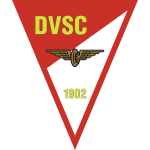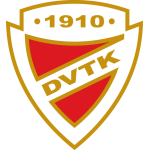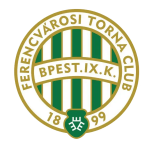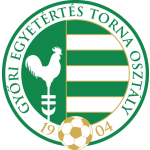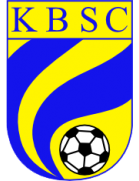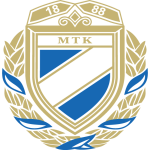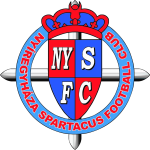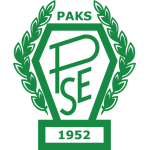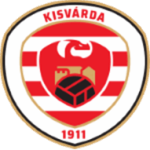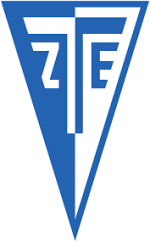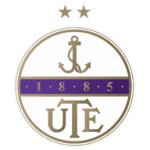Hungarian Football Teams: All Teams with Stats, Standings, Transfers & Injuries
Football in Europe has evolved the most since the inception of the sport. So much so that the top five football leagues in the world are all in Europe. While these elite leagues are undoubtedly popular due to the star-studded teams and fast-paced football, there are many countries in Europe that are second to none when it comes to competitive football teams and a fluid league system in club football divisions.
One such country is Hungary. The Hungarian football teams and the different divisions within the country follow the traditional club football formats, where there are many divisions of competition, connected with promotion and relegation. Over the last decades, football in Hungary has become a cornerstone of national identity. While the national spotlight has shifted, club football in the country continues to be more competitive and passionately supported by the fans.
Whether it is the Nemzeti Bajnoksag or the NB II, the Hungarian football teams have made massive progress. A big thanks for that goes to the well-structured Hungarian football pyramid. Across the different divisions, the Hungary football teams continue to produce promising talents who go on to shine in the grandest stages of Europe.
Hungarian Football Clubs: History and Evolution of Football Teams in Hungary
When it comes to Hungarian football heritage and the Hungarian football clubs paving the way, clubs like Ferencvarosi TC and MTK Budapest were two marquee names in the early years of football in Hungary. The discovery of Nemzeti Bajnoksag marked a new era in 1901. The inception of the new league came with better organisation. The footballing structure across the club divisions was not a highlight of the country while it was taking its course. However, the progress of the national team was marked by the heroics of the legendary Ferenc Puskás and others.
The rise of football among Hungary football clubs was seen decades ago, and Hungarian football clubs like Ujpest and Honved were the teams that would have many players in their team who would earn national team callups. Even though football experienced consistent growth in the country during the 1960s, the influence of the sport would start to decline. While that has been the issue for the country for many decades, with investments in youth academies and infrastructure, football clubs in Hungary have resumed their growth. With the Hungarian football league system now more fluid than ever, the sport certainly has immense potential in the country.
Hungarian Football League System
There are different leagues that are connected with each other to form the Hungarian football league system. Like the traditional format followed in Europe, the Hungarian football league system has promotion and relegation between the leagues in different divisions. The top competition within the country is known as NB I (Nemzeti Bajnoksag I). While it began as an eight-club competition back in 1901, there are now 12 teams competing in the competition.
Following that, we have NB II, also known as Nemzeti Bajnoksag II. It is the second-tier competition that has 18 teams in the league. The NB III is the 3rd tier league, which consists of four regional groups. Lastly, there are the County and regional leagues, which are considered 4th Tier and below. As mentioned earlier, the Hungarian football league system follows the traditional promotion and relegation to make sure of dynamism. The two clubs that finish at the top of NB II get promoted to first-tier competition, while the bottom-of-the-table teams get relegated to NB III.
Most Successful Hungarian Football Teams
When it comes to Hungary football clubs, since the very beginning, there have been many Hungarian football clubs that have made a name for themselves due to their success. From domestic domination to worldwide recognition, there are many reasons why the following are the most famous football teams in Hungary:
| Club Name | Founded | Major Trophies Won |
|---|---|---|
| Újpest FC | 1885 | 31 |
| NTK Budapest | 1888 | 37 |
| Ferencvárosi TC | 1899 | 62 |
| Debreceni VSC | 1902 | 18 |
| Győri ETO FC | 1904 | 9 |
| Budapest Honvéd | 1909 | 22 |
| Vasas SC | 1911 | 16 |
| Zalaegerszegi TE | 1920 | 1 |
| Videoton FC | 1941 | 7 |
| Pécsi MFC | 1950 | 2 |
Nemzeti Bajnokság I (NB I) Teams
The Nemzeti Bajnokság I is the competition that all the Hungarian football clubs fight for. The league was established back in 1901. Back then, it was a competition where 8 clubs competed for the top spot. Now, the league comprises 12 Hungarian football teams and follows a round-robin format. The team that ranks in the top position qualifies for the UEFA Champions League qualifying rounds. On the other hand, the 2nd and 3rd spot of the table get their entry to other UEFA competitions.
| Team Name | City | Year Founded | Home Stadium |
|---|---|---|---|
| Újpest FC | Budapest | 1885 | Szusza Ferenc Stadion |
| MTK Budapest | Budapest | 1888 | Hidegkuti Nándor Stadion |
| Ferencvárosi TC | Budapest | 1899 | Groupama Aréna |
| Győri ETO FC | Győr | 1904 | ETO Park |
| Debreceni VSC | Debrecen | 1902 | Nagyerdei Stadion |
| Vasas SC | Budapest | 1911 | Illovszky Rudolf Stadion |
| Kisvárda FC | Kisvárda | 1911 | Várkerti Stadion |
| Diósgyőri VTK | Miskolc | 1910 | Diósgyőr Stadion |
| Zalaegerszegi TE | Zalaegerszeg | 1920 | ZTE Aréna |
| Paks FC | Paks | 1952 | Fehérvári úti Stadion |
| Mezőkövesd Zsóry | Mezőkövesd | 1975 | Városi Stadion |
| Puskás Akadémia | Felcsút | 2005 | Pancho Aréna |
Nemzeti Bajnokság II (NB II) Teams
The Nemzeti Bajnoksag II, or NB I, is known as the tier-2 competition of Hungarian football clubs. It is a popular opinion that this division is the most fierce of all the competitions in the Hungarian club football landscape, given the stakes. The league consists of a total of 18 teams. Only the top two teams will get promoted to NB I, while the bottom three get relegated to NB III.
| Club Name | City | Year Founded | Stadium |
|---|---|---|---|
| III. Kerületi TVE | Budapest | 1887 | Hévízi úti Stadion |
| Szeged-Csanád GA | Szeged | 1899 | Szent Gellért Fórum |
| Mosonmagyaróvár | Mosonmagyaróvár | 1904 | Wittmann Antal Park |
| Békéscsaba 1912 Előre | Békéscsaba | 1912 | Kórház utcai Stadion |
| Budafoki MTE | Budapest | 1912 | Promontor utcai Stadion |
| Kecskeméti TE | Kecskemét | 1911 | Széktói Stadion |
| Soroksár SC | Budapest | 1911 | Szamosi Mihály Sporttelep |
| BVSC-Zugló | Budapest | 1911 | Szőnyi úti Stadion |
| Szombathelyi Haladás | Szombathely | 1919 | Haladás Sportkomplexum |
| Siófok BFC | Siófok | 1921 | Révész Géza Stadion |
| FC Ajka | Ajka | 1923 | Városi Sportcentrum |
| Nyíregyháza Spartacus | Nyíregyháza | 1928 | Városi Stadion |
| Csákvári TK | Csákvár | 1947 | Tersztyánszky Ödön Stadion |
| Pécsi MFC | Pécs | 1950 | PMFC Stadion |
| Tiszakécske FC | Tiszakécske | 1950 | Városi Stadion |
| Kazincbarcikai SC | Kazincbarcika | 1957 | Kolorcity Aréna |
| FC Dabas | Dabas | 1992 | Wellis Sportpark |
| Kozármisleny SE | Kozármisleny | 2004 | Stadion Kozármisleny |
Női NB I Teams
When it comes to top Hungarian football clubs, side-by-side with men’s football, women’s football has also had impressive progress over the years. In Hungary, the Noi NB I is the top-tier competition when it comes to women’s football. From the nourishment of women’s football to the right marketing, the Noi NB I have done an impressive job. Here are the Noi NB I Teams:
| Team Name | City | Year Founded | Home Stadium |
|---|---|---|---|
| MTK Hungária FC Women | Budapest | 1888 | Lantos Mihály Sporttelep |
| Ferencvárosi TC Women | Budapest | 1899 | Kőbányai úti Stadion |
| ETO FC Győr Women | Győr | 1904 | ETO Park |
| DVTK Women | Miskolc | 1910 | DVTK Edzőközpont |
| Soroksár SC Women | Budapest | 1911 | Haraszti úti Stadion |
| Astra Hungary FC | Budapest | 1990 | Csepel Stadion |
| Viktória FC Szombathely | Szombathely | 1993 | Király Sportlétesítmény |
| Puskás Akadémia Women | Felcsút | 2005 | Pancho Aréna Training Ground |
Given the fluid Hungarian football league system and the competitiveness among the Hungarian football teams across different divisions, the Hungarian football landscape has a lot of promise and is yet to reach its full potential. With the attention of the hierarchy steered to the development around the infrastructure and system of Hungarian Football, it is safe to say that in years to come the Hungarian football and the Hungary football teams will make a big name for themselves in European football.


